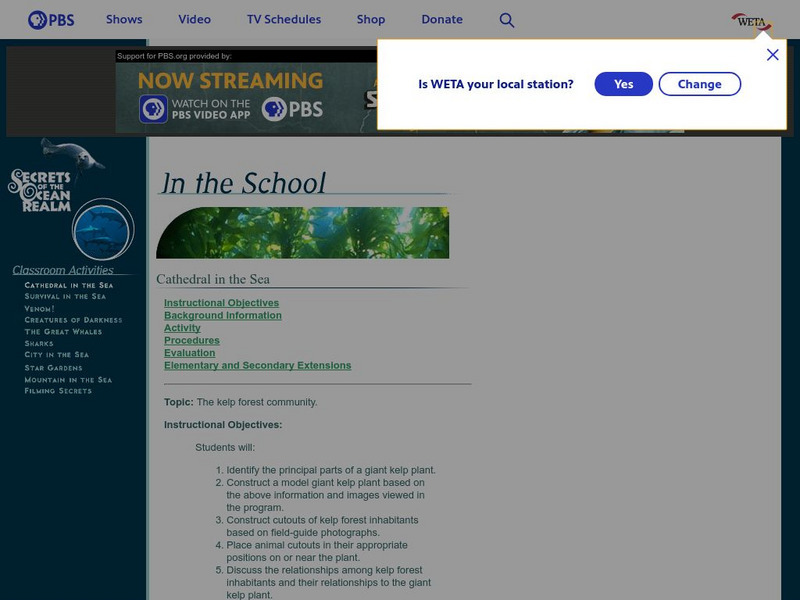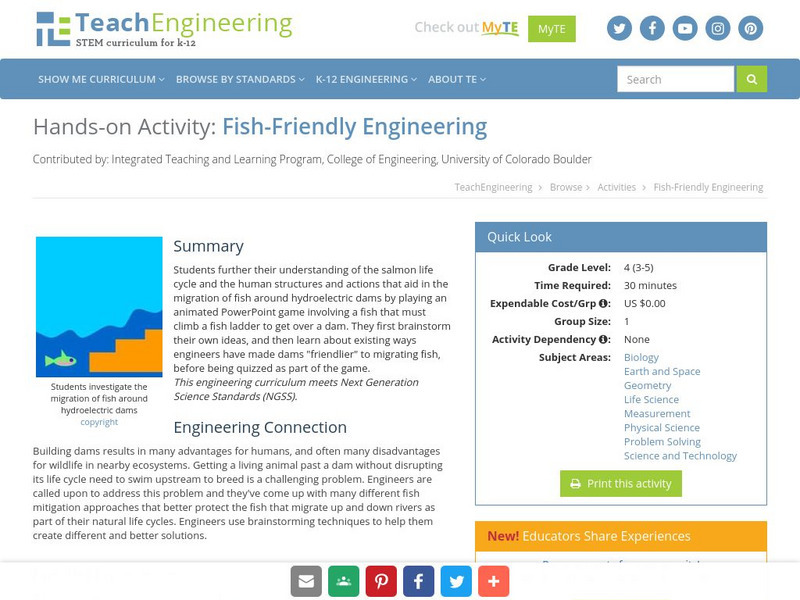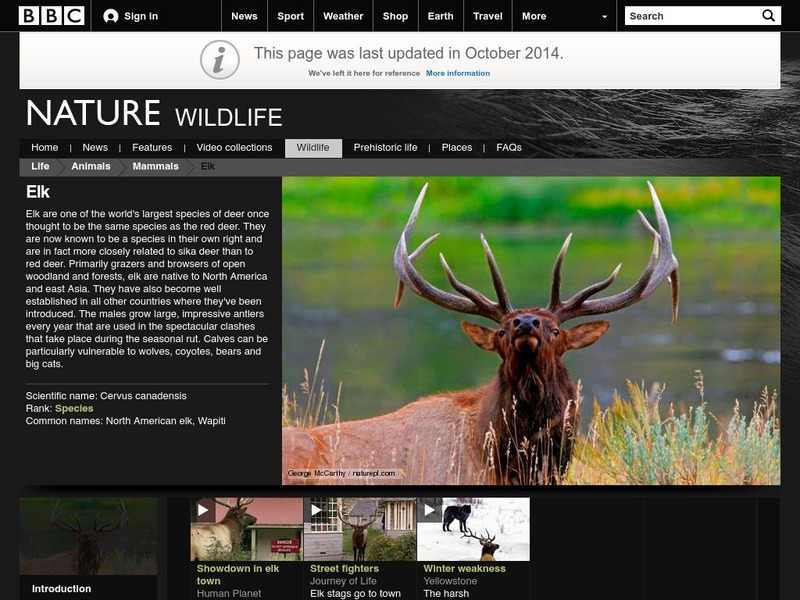E-learning for Kids
E Learning for Kids: Science: Bay of Whales: Calculating Speed
Amelia is a researcher. She studies the speed of animals. Join her in Antarctica to help her figure these calculations.
Utah Education Network
Uen: Can You Do It? I Can Do It!
In this lesson students focus on physical movement while they make the same movements different animals would make.
TED Talks
Ted: Ted Ed: Why Do Animals Form Swarms?
Maria R. D'Orsogna shares why members of a swarm follow simple rules: travel in the same direction as those around you, stay close and avoid collisions.
Curated OER
Bering Landbridge Animation
During the last ice age the water level in the oceans fell by more than 120 metres. The drop in water levels exposed the floor of the Bering Straight. Over time, people from Asia migrated across this "land bridge" to North America. As...
PBS
Pbs Teachers:cathedral in the Sea: Construct a Model Kelp Forest
Investigate the relationships among kelp forest inhabitants and their relationships to the giant kelp plant. List the parts of a giant kelp plant and construct a model of a kelp forest habitat.
The Franklin Institute
The Franklin Institute: Living Things Families
What do centipedes and crabs have in common? What's so special about a backbone? Check this site out from The Franklin Institute if you are interested in biology and classification.
TeachEngineering
Teach Engineering: Fish Friendly Engineering
Students further their understanding of the salmon life cycle and the human structures and actions that aid in the migration of fish around hydroelectric dams by playing an animated PowerPoint game involving a fish that must climb a fish...
TeachEngineering
Teach Engineering: Dams
Through eight lessons, students are introduced to many facets of dams, including their basic components, the common types (all designed to resist strong forces), their primary benefits (electricity generation, water supply, flood...
Curated OER
Unesco: Algeria: Tassili N'ajjer
Located in a strange lunar landscape of great geological interest, this site has one of the most important groupings of prehistoric cave art in the world. More than 15,000 drawings and engravings record the climatic changes, the animal...
Missouri Botanical Garden
Missouri Botanical Garden: Tundra Animals
Explore this comprehensive resource on the birds and mammals of the tundra. This resource features information such as diet, class, order, size, habitat, conservation range and the like.
San Diego Zoo Global
San Diego Zoo: Birds
This resource provides detailed information about birds, as well as several pictures.
Smithsonian Institution
National Museum of Natural History: Hall of Mammals: Caribou
Brief overview of the caribou and an accompanying photo illustrate the physical adaptations that allow this animal to migrate to find its food supply.
PBS
Pbs Teachers:a Model of Seed Dispersal
Investigate propagation systems in plants, and explain the ways some animals disperse seeds through their digestive processes. Role-play and map the daily travels of one seed-bearing animal to explore the migration of seeds.
Sophia Learning
Sophia: Immigration and Emmigration: Lesson 5
This lesson will introduce immigration and emmigration, and explain the effects both can have on a community.
Other popular searches
- Animal Migration for Kids
- Animal Migration Patterns
- Animal Movement Pictures
- Animal Movement Names
- Animal Migration Hibernation
- Dance and Animal Movements
- Animal Migration Unit
- Animal Movement Mapping
- Animal Movement Articles
- Animal Migration in Art
- Animal Movement and Physics
- Animal Movement Graph













